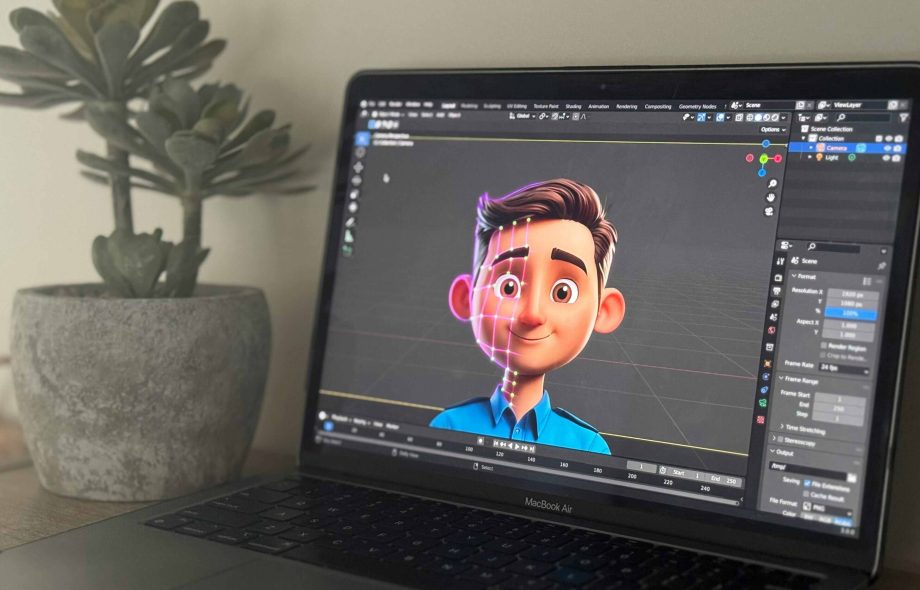Artificial intelligence is transforming the creative landscape, and the world of graphic design is no exception. From automated logo creators to generative design tools, the rise of AI has sparked an important question: will AI replace graphic designers entirely? As a leading provider of graphic designing services, we explore this evolving relationship between human creativity and machine intelligence and what it means for the future of design.
Understanding AI’s Role in Modern Graphic Design
AI in graphic design isn’t just a buzzword, it’s a revolution in process and productivity. Modern AI tools can generate visuals, suggest color palettes, and even produce layouts based on data-driven insights. These systems use machine learning to analyze design trends, understand user preferences, and create assets at lightning speed.
However, the core of design emotional connection, cultural context, and storytelling still remains uniquely human. While AI can replicate patterns, it cannot feel aesthetics or understand the nuanced psychology behind a visual message. That distinction is where human designers continue to lead.
The Human Edge: Creativity Beyond Algorithms
When discussing whether AI will replace graphic designers, it’s vital to recognize the boundaries of automation. AI can assist, but it cannot imagine. Human designers combine strategy, emotion, and cultural insight to craft designs that speak directly to audiences.
For instance:
-
Brand storytelling requires understanding identity and mission.
-
User experience design demands empathy and real-world context.
-
Advertising visuals rely on emotional triggers and social trends.
AI may streamline technical execution, but the spark of originality the “human touch” remains the most valuable design currency.
How AI is Transforming Graphic Designing Services
As professionals in the graphic designing service industry, we view AI not as competition, but as collaboration. AI-powered design platforms can automate repetitive tasks, allowing designers to focus on creativity and strategy.
Here’s how AI is enhancing design workflows:
-
Faster Prototyping – AI can instantly generate multiple layout variations for review.
-
Data-Driven Insights – Design decisions are supported by analytics, improving conversion outcomes.
-
Automated Adjustments – Resizing, formatting, and optimization for various platforms are streamlined.
-
Predictive Design – Algorithms anticipate user behavior, helping create more effective visuals.
This symbiotic relationship allows creative teams to deliver faster, more impactful results without sacrificing originality.
The Limitations of AI in Design
While AI is impressive, it’s far from perfect. It lacks:
-
Cultural Sensitivity: AI-generated visuals may unintentionally ignore cultural nuances or misrepresent symbolism.
-
Ethical Judgment: Human designers consider moral implications, while AI focuses solely on data and patterns.
-
Emotional Resonance: Machines cannot interpret the deep emotional layers that make a design memorable.
Design thrives on storytelling, empathy, and social context—qualities no algorithm can fully replicate.
The Future: AI as a Design Partner, Not a Replacement
The real power of AI lies in collaboration, not competition. The future of design will combine human creativity with AI precision. Designers who adapt by learning to use AI tools effectively will lead the next wave of innovation.
In the coming years, we will see:
-
Hybrid design teams that integrate AI-driven tools for enhanced productivity.
-
More personalized content creation, guided by human direction.
-
A shift in designer roles from “creator” to “creative strategist.”
The question is not “will AI replace graphic designer”, but rather “how will designers evolve with AI?”
How Businesses Benefit from AI-Assisted Graphic Designing Services
For brands and businesses, leveraging AI within graphic designing services delivers measurable advantages:
-
Reduced turnaround time without compromising quality.
-
Cost efficiency, as automated systems handle repetitive tasks.
-
Consistency across platforms, maintaining brand integrity.
-
Enhanced audience targeting, thanks to AI-driven data insights.
Businesses that integrate human creativity with AI-driven precision achieve a perfect balance between innovation and authenticity.
Conclusion: The New Era of Intelligent Design
AI is reshaping the creative industry, but not eliminating it. The fear that AI will replace graphic designer is misplaced; it will empower designers instead. Those who harness AI as a collaborative tool will thrive, delivering faster, smarter, and more strategic graphic designing services that redefine innovation.
The fusion of human creativity and AI intelligence represents the future of design where machines enhance capability, and designers elevate imagination.
 :
https://xoomplus.co.uk/
:
https://xoomplus.co.uk/

